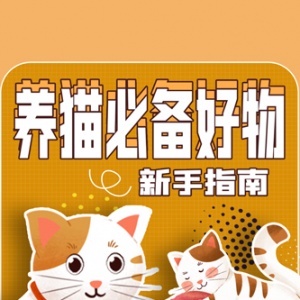【农学课件】植物营养原理
【农学课件】植物营养原理-资料下载页
2024-03-02 22:12本页面
【正文】 lection of SE forms a sieve tube. Autoradiography of stems translocating sugars made from 14CO2 fed to leaves has shown that the phloem is the pathway for distributing photoassimilates. symplastic apopl asticsymplastic apoplastic Loading can be apoplastic or symplastic. The type of loading is speciesdependent and can be indicated by ―plasmodesmagrams‖ (righthand diagram) that map the number of plasmodesmatal connections between different cell types. Apoplastic loaders (Type 2a or 2b) tend to use sucrose( 蔗糖) as their transport sugar whereas symplastic loaders (Type 1) use oligosaccharides( 寡糖) such as raffinose( 蜜三糖) and stachyose( 水苏糖) . Apoplastic loading involves efflux of sucrose from cells, movement through the cell wall, and active transport of sugars into the phloem. The latter requires the presence of an H+transporting ATPase to energise the membrane and a H+sucrose symport to transport the sucrose into the SE/CC plex. Reporter genes and antibodies have shown that these proteins are present. The mechanism by which sugars are concentrated in the phloem of symplastic loaders is not understood. It may involve “polymer trapping” Each nodule fixes 30100 mg of N [g fresh weight]1 day1 without large accumulation of N in the nodule. There must be very efficient export. Each nodule exports 310x its own N content every day. Up to 19 mg of sugar are needed to fix 1 mg of N so there must also be efficient C uptake. Fixation occurs in peribacteroids that contain modified Rhizobium bacteria surrounded by a peribacteroid membrane derived from the plant plasma membrane during the nodulation process. The peribacteroid membrane is energised by a H+pumping Ptype ATPase that pumps H+ from the cytosol into the peribacteroid creating an acidic pH and an insidepositive membrane potential. Carbon is taken up into the nodule as malate through a malatepermeable channel with malate entering in response to the insidepositive membrane potential. Metabolism keeps internal malate low, so maintaining the electrochemical potential gradient in a direction favourable for uptake. …. or so we thought. But a year or so ago Blumwald and colleagues showed otherwise. First of all, they transformed Arabidopsis to overexpress (opposite of antisense) a single gene encoding a vacuolar Na+/H+ antiport Then the gene was over expressed in tomato, and amazingly, that, too could grow in 200 mM NaCl Wildtype low salt Wildtype 200mM NaCl Mutant 200 mM salt • Even though the Na+/H+ transporter is expressed the fruits, no salt accumulates! • That’s probably because most of the water in the fruit is translocated along with sugars in the phloem. • So with 60 million hectares (25% of irrigated land) now affected by salinity, can and should we use geic manipulation to modify such crops? ( 3)养分在体内重新分配 韧皮部中养分的移动性 不同营养元素在韧皮部中的移动性不同。许多研究结果表明,营养元素按其在韧皮部中移动性的难易程度分为移动性大的、移动性小的和难移动的三组 。 营养元素在韧皮部中的移动性在一定程度上反映了,该元素在的再利用能力的大小。养分的再利用与植物的缺素部位密切相关。再利用程度大的元素,养分缺乏首先表现在老的部位,而不能再利用的养分,缺素症状首先表现在幼嫩器官 表 122 韧皮部中矿质元素的移动性 [4] 移动性大 移动性小 难移动 氮 铁 硼 磷 锰 钙 钾 锌 镁 铜 表 123 缺素症状表现部位与养分再利用程度的关系 [4] 营养元素种类 缺素症出现部位 再利用程度 氮、磷、钾、镁 老叶 高 硫 新叶 较低 铁、锌、铜、钼 新叶 低 硼、钙 新叶顶端分生组织 很低 第三节植物的叶部营养 ( 一 ) 叶片吸收养分的机理 研究表明 , 水生植物的叶片是吸收矿质养分的重要部位 。 而陆生植物叶表皮细胞的外壁上的蜡质层和角质层 , 对矿质养分的吸收有明显的阻碍 。 蜡质层在叶片的最外面 , 疏水性强 , 对水分和无机养分吸收有明显的限制 。 水分及其溶于水的无机离子通过蜡质层上的间隙到达角质层 。 角质层有微细孔道 ( 甘蓝叶片的角质层的孔道直径约 6~ 7nm) , 也叫 外质连丝 , 它是叶片吸收养分的通道 。 这些通道通过细胞壁一直延伸到原生质膜 。 角质层的主要化学成分为半亲水的 C18 羟基脂肪酸类化合物 , 并含有角质 、果胶及一些非脂化的角质多聚物 , 因而带一定的负电荷 。 角质层中的负电荷具有阳离子交换 特性 , 并且从外向内 , 电荷密度又低到高形成一个梯度 , 因此有利于离子沿着该梯度穿过角质层 。 当溶液经过角质层孔道到达细胞壁后 , 还要进一步经由细胞壁中的外质连丝到达原生质膜 。 养分跨膜过程与根系类似 。 (二 )叶面营养的特点 优点 肥效迅速、肥料利用率高 土壤养分有效性低时 土壤表层干燥 生长后期根系活力下降 增加籽粒蛋白质含量 增加果实中钙的含量 缺点 肥效短暂 存在问题 穿透率低,尤其对角质层厚的叶片 从疏水层表面流失 被雨水淋洗 一次施肥提供的养分总量有限(平均 1% 400l/ha) 叶片烧伤(枯斑或烧伤) 表 124土壤施铜和叶面施铜对小麦生长参数和籽粒产量的影响( Grundon, 1980) 处理 穗数 /m2 粒数 /穗 籽粒产量(克干物 质 / m2 ) 不施铜 土壤施铜( kg/CuSO4/ha) 叶面喷施( 2%, 2kg CuSO4/ha) 拔节期施一次 拔节及抽穗期各一次 (三)影响根外营养的因素 第一 叶片类型 水生植物和生长在潮湿环境中的植物 , 蜡质层薄 , 吸收养分容易;而旱生植物的叶片蜡质层厚 , 吸收养分较困难 。双子叶植物叶面积大 , 叶片角质层较薄 , 养分较易穿过;而单子叶植物的叶片小 , 角质层厚 , 养分不易被吸收 。 与大田作物相比 , 温室大棚里的作物 , 叶片娇嫩 , 角质层少 。 因此 , 对旱生植物和单子叶植物应适当增加养分浓度和喷肥次数 。 第二 矿质元素种类与浓度 植物叶片对不同种类矿质养分的吸收速率是不同的 。 叶片对氮素的吸收速率依次为:尿素 硝酸盐 铵盐;对钾肥的吸收速率为: KCIKNO3KH2PO4。 (三)影响根外营养的因素 第三 叶片对养分的吸附能力 养分溶液在叶片上的附着时间越长,越有利于养分吸收。但是,由于叶片外表面有一层疏水的蜡质层,所以养分溶液不易附着。如果给溶液中加入表面活性剂,就可延长溶液在叶片上的附着时间。常用的表面活性剂有吐温、洗衣粉等。尿素也有一定的作用。 第四 喷施时期 一般应选择早晨太阳升起前,或下午太阳落山前后较好;或者是无风的阴天。下大雨前,或烈日下,或大风天不要喷肥。 第四节植物的营养特性 植物从种子萌发到种子形成的整个生育过程中,要经过许多不同的生育阶段。在整个生育过程中,除了萌发期靠种子营养和生育末期根部停止吸收养分外,作物都要通过根系从介质中吸收养分。植物根系从介质中吸收养分的整个时期,就叫作物营养期。 作物吸收养分的一般规律是 : 生长初期吸收的数量、强度都较低, 随着时间的推移,对营养物质的吸收量逐渐增加,到成熟期,又趋于减少。关于养分吸收的高峰和各生育期的对氮、磷、钾吸收的数量、比例等,不同作物也有差别。如单子叶植物氮素吸收高峰大约在拔节期,而开花期吸收量有所减少;而双子叶植物的棉花吸收氮素的高峰约在初花期 盛花期。对磷和钾来说,水稻和冬小麦的最大吸收期在生育中期,而后期较少;棉花、苹果等作物在生育后期的吸收量仍然很大。 作物营养临界期 所谓作物营养临界期是指某种养分缺乏或过多时对作物生长影响最大的时期 。 在临界期 , 作物对某种养分的需求的绝对数量虽然不多 , 但很迫切 , 作物因某种养分缺乏或过多而受到的损失 , 即使在以后该养分供应正常也很难弥补 。 各种作物的营养临界期不完全相同 , 但多出现在作物生育前期 。 原因是作物生育初期根系较小 , 吸收能力差 , 所以对环境介质中的养分供应比较敏感 。 大多数作物磷素营养的临界期多出现在幼苗期 , 或种子营养向土壤营养的转折期 。 冬小麦在分蘖初期;玉米在出苗后一周左右;棉花在出苗后 10~ 20天 。 此时 , 种子中储藏的磷素业已耗尽 , 根系的吸收能力又弱 , 如果土壤磷素供应不足 , 对幼苗和后期的生长
相关知识
宠物营养原理课件
《宠物营养原理》PPT课件.ppt
宠物营养学基本知识(能量与宠物营养)课件
女生如何选择农学专业?兴趣、前景、职业规划全面解析
宠物营养与食品绪论课件.ppt
小动物临床营养学版课件.pptx
宠物营养与食品绪论ppt课件
植物提取物抗氧化原理及成分解析
医学专题—宠物营养学基本知识(能量与宠物营养)课件
宠物碳水化合物营养ppt课件.ppt
网址: 【农学课件】植物营养原理 https://www.mcbbbk.com/newsview232373.html
| 上一篇: 动物营养与饲料学科 |
下一篇: 肠内营养讲.ppt |
推荐分享

- 1养玉米蛇的危害 28694
- 2狗交配为什么会锁住?从狗狗生 7180
- 3我的狗老公李淑敏33——如何 6236
- 4豆柴犬为什么不建议养?可爱的 4637
- 5南京宠物粮食薄荷饼宠物食品包 4563
- 6中国境内禁养的十大鸟种,你知 4429
- 7湖南隆飞尔动物药业有限公司宠 4259
- 8自制狗狗辅食:棉花面纱犬的美 4257
- 9家养水獭多少钱一只正常 4212
- 10广州哪里卖宠物猫狗的选择性多 4122






